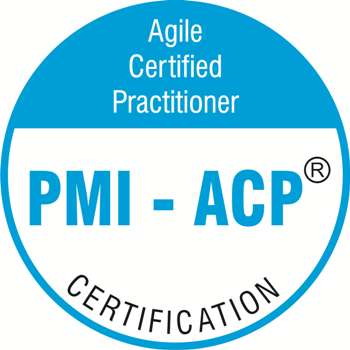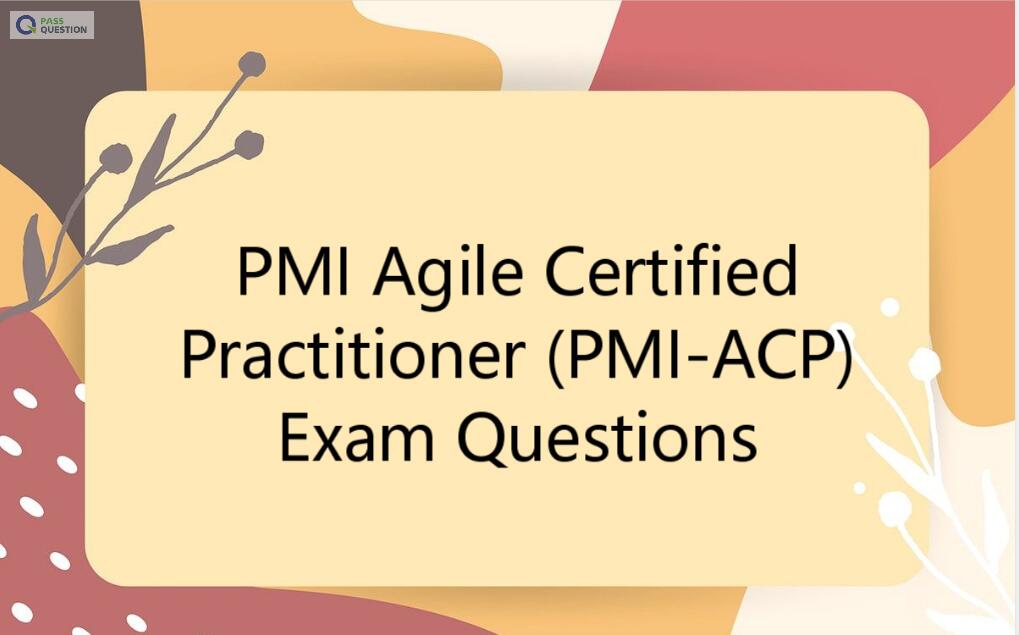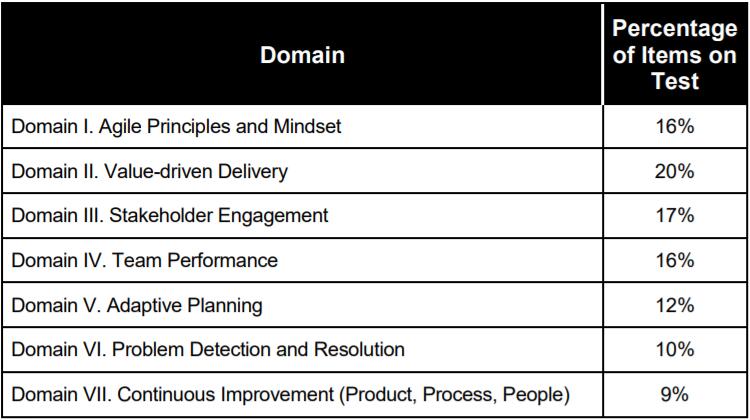PMI Agile Certified Practitioner (PMI-ACP) Exam Questions
PMI Agile Certified Practitioner (PMI-ACP) is one of the fastest growing certifications in the field of project management. Earning a PMI-ACP certification helps demonstrate your knowledge of agile principles and your skill with agile techniques. PassQuestion new updated PMI Agile Certified Practitioner (PMI-ACP) Exam Questions which cover all the exam topics and objectives and will prepare you for success quickly and efficiently. We ensure you can pass the PMI-ACP Certification exam easily with high score.
 PMI Agile Certified Practitioner (PMI-ACP) Certification
PMI Agile Certified Practitioner (PMI-ACP) Certification
Earning your PMI-ACP certification is the perfect way to demonstrate your knowledge of and commitment to this rapidly growing approach to project management. It showcases your agile training, experience, and a depth of knowledge on agile practices, tools and techniques. Plus, it’s the only certification that validates expertise in multiple agile approaches.
To earn the PMI-Agile Certified Practitioner (PMI-ACP)certification, you must meet the experience and education requirements, and pass the PMI-ACP exam, a 120-question, multiple-choice exam.
PMI-ACP Exam Details
The exam is comprised of a total of 120 multiple-choice questions — 20 of which are pretest questions that do not affect the score. Computer-based testing is the standard method for PMI® certification exams, although paper-based testing is available in certain situations. The time allotted for the exam is three hours. Exam questions are divided evenly — 50% Agile tools and techniques and 50% knowledge and skills. The Agile tools and techniques covered include: Communications; Planning, monitoring and adapting; Agile estimation; Agile analysis and design; Product quality; Soft skill negotiation; Value-based prioritization; Risk management; Metrics; and Value stream analysis.
PMI-ACP Exam Content

View Online PMI Agile Certified Practitioner (PMI-ACP) Free Questions
1.What key benefits might stakeholders realize from an Agile approach?
A. The ability to bypass the change-management process, inserting new requirements and changes directly into the team as they meet daily
B. The early and continuous delivery of valuable software, providing increased visibility and the opportunity for more frequent adjustments
C. Increased access to the project and less reliance on formal reports and status meetings to better understand the current work and the risks the team is accepting
D. The team’s flexibility to make changes mid-iteration as business needs or priorities change, increasing the ability of the team to meet project commitments
Answer: B
2.What is the first thing that a team should do to estimate user stories for a project?
A. Sort the user stories according to priority.
B. Schedule a team meeting to understand them.
C. Define the story points measure.
D. Estimate through function point analysis.
Answer: C
3.A story point is the:
A. Relative measure of the size of a user story.
B. Duration it takes to complete a user story.
C. Priority of the user story in the backlog.
D. Business value of the user story.
Answer: A
4.According to the Agile Manifesto, which of the following describes the more valued items?
A. Customer collaboration, following a plan, working software, and individual interactions
B. Working software, individual interactions, responding to change, and comprehensive documentation
C. Individual interactions, working software, customer collaboration, and responding to change
D. Responding to change, individual interactions, processes and tools, and customercollaboration
Answer: C
5.On a particular project, product quality is being measured at regular intervals and is consistently below the acceptable level. In a Lean environment, how should this problem be addressed?
A. The team should implement more rigorous testing at the end of each development cycle.
B. Management should direct the team on specific actions that they should take to improve quality.
C. Management should guide the team as it seeks to improve itself and reduce errors in the system.
D. The Project Champion should review the acceptable quality threshold to ensure that it is realistic.
Answer: C
6.In reference to Scrum, each sprint should produce:
A. An increment of potentially shippable product functionality.
B. A set of documented product requirements and specifications.
C. A release with testable and measurable functionality.
D. An increment of potentially testable product functionality.
Answer: A
- TOP 50 Exam Questions
-
Exam
All copyrights reserved 2025 PassQuestion NETWORK CO.,LIMITED. All Rights Reserved.


